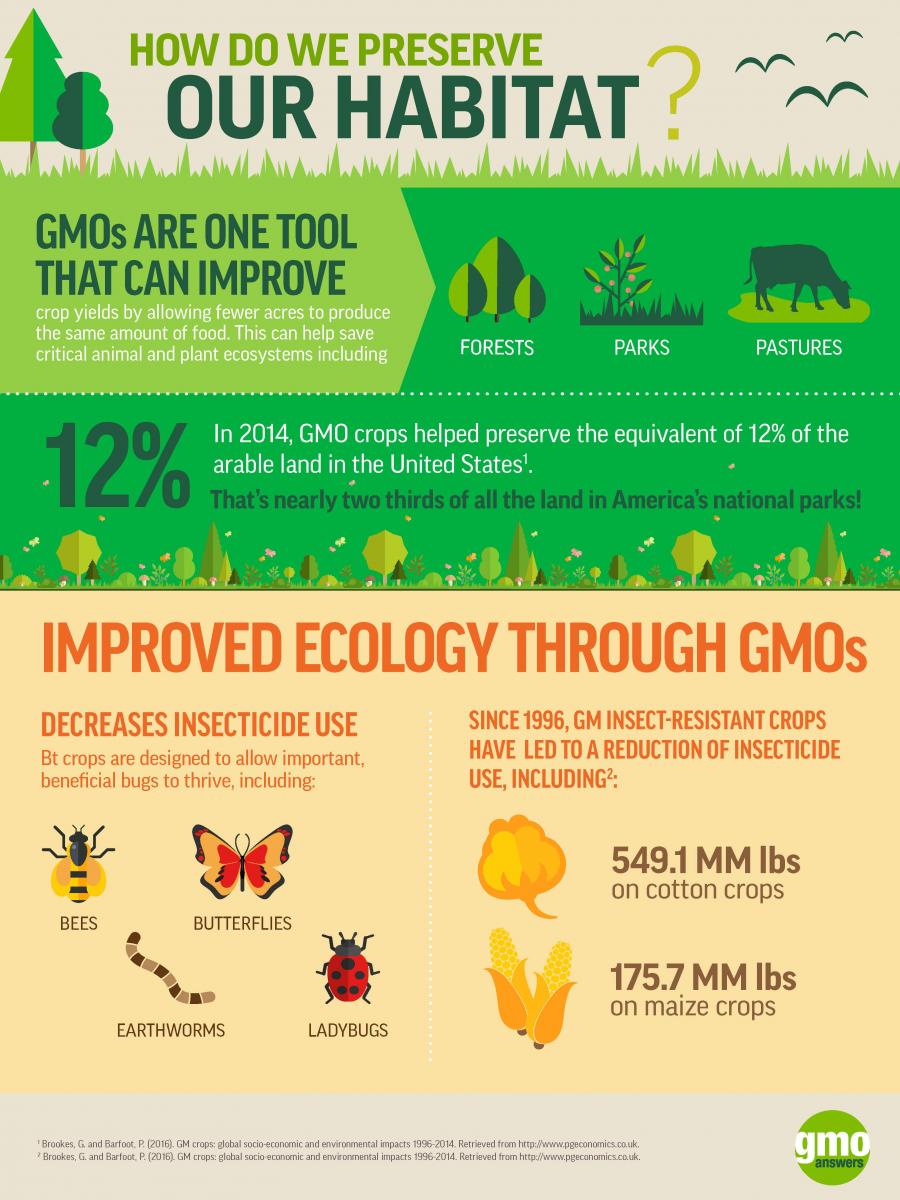How GMOs Can Help Protect Our Habitats And Ecosystems
This post was originally published on Forbes on July 27, 2016.
Post written by Kate Hall. Kate Hall is managing director of the Council for Biotechnology Information and GMO Answers spokesperson.

There are moments in time when popular culture turns its focus to the many challenges facing the environment. We see these big upticks in environmental engagement during international celebrations like Earth Day, World Environment Day, or Arbor Day, after catastrophes like oil spills, or when a celebrity or politician takes up the cause.
These popular culture moments come and go, and some people’s attention moves on to a new issue or event. However, for those who make their living by growing the food, fiber, or fuel we all rely upon, environmental stewardship is an integral part of everyday life.
Each and every day the agriculture community addresses the challenges posed by changing weather patterns and dwindling natural resources in a very tangible way. This, among other reasons, is why, despite common misconceptions, the farming and agriculture community is constantly making sourcing decisions, resource allocation adjustments and process changes to be more environmentally friendly.
Over the last 20 years, one of these changes has been increased usage of GM crops. Again, despite the myths that are abound in our food culture, GMOs play a meaningful role in protecting our land, habitats, water and air.
This week, in our ongoing effort to dispel the myths around GMOs and the environment and share biotech’s positive role in creating more environmentally sustainable food, fiber and fuel, we released the second in a series of infographics designed to highlight the role GMOs play in preserving diverse ecosystems that otherwise would need to be brought into agriculture production in order to meet growing demand for consumer goods.

In 2014, GM crops helped preserve the equivalent of 12% of the arable land in the United States1. That’s nearly two thirds of all of the land in America’s national parks, or 51 million acres. Moreover, since 1996, GM insect-resistant crops have led to a reduction of insecticide use, including a 549.1 million pound reduction on cotton crops and 175.7 million pound reduction on maize crops. Through these types of biotechnology advancements, insect-resistant Bt crops have allowed important beneficial insects, including bees, butterflies, earthworms and ladybugs to thrive in their habitats, allowing our natural pollinators to continue to play their critical role in biodiverse ecosystems.
Finally, one of the most maligned forms of GMOs are herbicide tolerant crops. Yet, these GMOs also have an incredible sustainability story to tell. The use of targeted pesticides, the reduction of soil tillage and fossil fuels, and the protection of organisms critical to soil health are all benefits of herbicide tolerant GMOs.
The important thing is, these facts and stats aren’t just numbers on a page, and this commitment to sustainability isn’t just a pop culture moment. Farmers’ decisions, including the choice to plant GM seeds, represent the countless and conscious choices that farmers and ranchers make each and every day to improve the natural environment in which we all live in and rely on for the food, fuel and fiber that continues to sustain us.